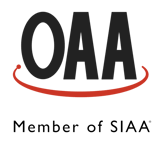Restoration Leadership: Refining What Still Has Value
2 min read
Topic: Blog leadership Business
In restoration, you learn that progress can come from repairing and refurbishing what already exists. We are often tempted to make big changes in business for the betterment of an organization, without considering what is worth maintaining. In my experience over the years restoring antique airplanes, I’ve recognized parallels between restoration and business leadership that have offered lessons in perspective and patience. Consider the following:
• Context Shapes Decision-Making
Every plane is different than the one before, shaped by its history, quirks and condition. Each plane tells its own story. Before you can restore a plane, several pieces of context are crucial including what it was originally designed to do, where it’s been stored, how it was used and what is required to give it new life.
Similarly in business, there is no one-size-fits-all way to lead an organization. A business’s unique history, team members, structures, customers, priorities and goals inform every single decision a leader makes. Before tackling a problem, leaders should consider the context that impacts the decision. Consult team members, consider how a decision might aid or disrupt the business and weigh the pros and cons. Doing so will allow leaders to make more informed decisions.
• Goals Guide Process
Restoring an airplane for display is a much different process than restoring one for flight. For a plane to fly, it must meet a strict set of safety and technical standards, whereas aesthetics and historical accuracy are most important in a restoration meant for display. Business strategy works in a similar way.
A leader who is driven by positioning a business for a sale and a leader focused on organic growth will likely have very different approaches to decision making. Identifying clear goals helps inform the steps a team can take to achieve them. Without clearly defined goals, leaders can find themselves making decisions that do not serve their business’s mission.
• Resourcefulness vs Resources
Restoration teaches a restorer the value of using what they already have in front of them. An antique plane may require some modernization, but the hope is to save as much as possible from the original aircraft. Business leaders can learn a bit from this mindset.
In business, it is often tempting to jump on the latest trend or new tech tool without considering how a business’s current resources can help achieve the same or a similar outcome. Customer relationship management systems (CRMs) are a great example as they can do more than manage interactions with customers. The data they offer can show areas for growth, help different departments collaborate and assist in strategic planning. The key for business leaders is to consider how they can better leverage their existing technology and resources before seeking out new, more expensive options.
Leadership, like restoration, is about balance and vision. Leaders who adapt a restorer’s mindset will benefit from a perspective that prioritizes the business’s goals and how to feasibly achieve them. Whether restoring an antique plan or growing a business, there is success in honoring what has already been built, preserving as much as possible and letting go of anything that does not advance the goal.
Tony Caldwell
Tony Caldwell is a modern “renaissance man,” who is not only immensely successful in the field of insurance, but is also a writer, children’s advocate, mentor and even a licensed pilot.
Always keen on helping others make their dreams come true, Tony and his team have helped independent agents grow into more than 250 independent agencies. This has made OAA the number one ranked Strategic Master Agency of SIAA for the last 5 years, and one of Oklahoma's 25 Best Companies to Work for.
Tony loves to share his knowledge, insight and wisdom through his bestselling books as well as in free mediums including podcasts and blogs.
Tony and his family are members of Crossings Community Church, and he is very active in community initiatives: he’s chairman of It’s My Community Initiative, Inc., a nonprofit working with disadvantaged people in Oklahoma City; and chairman of the Oklahoma Board of Juvenile Affairs., and he has served through many other organizations including the Salvation Army, Last Frontier Council of the Boy Scouts of America, and the Rotary Club.
In his spare time, Tony enjoys time with his family. He’s also an active outdoorsman and instrument-rated commercial pilot.
Recent Posts
Blog
Brace For Reality: The Pink City’s Lesson in ...
A great brand does more than draw attention, it conveys a message to audiences that, when done...
Blog
Business Lessons from the Hustle of Delhi’s ...
Delhi is a city that never stands still. From the moment you step onto its streets, you’re swept...

